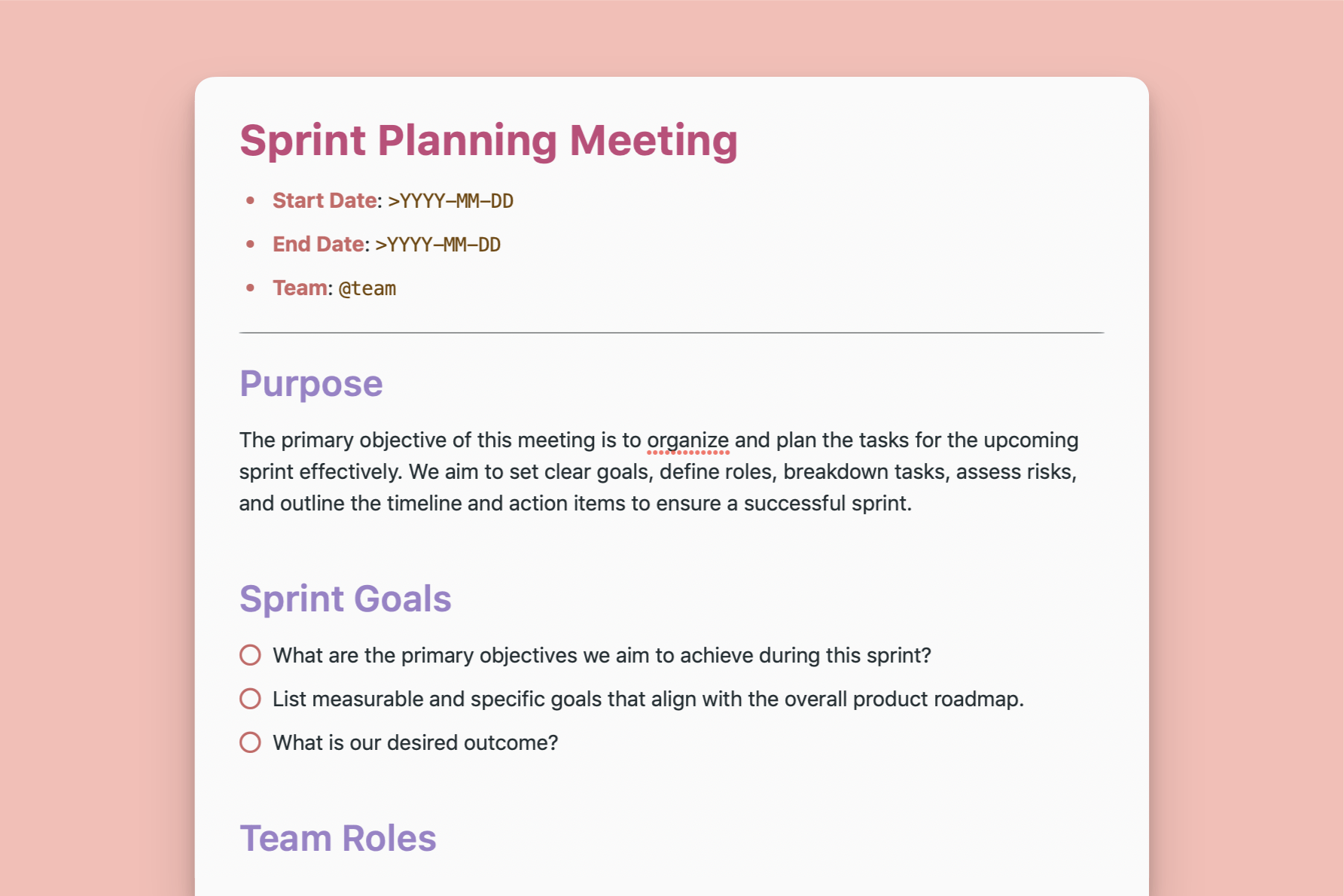Home

Sprint Planning Meeting
This NotePlan template streamlines Sprint Planning Meetings by organizing goals, tasks, roles, risks, and action items for a successful sprint.
Get things done with NotePlan
Categories
Engineering
Work
This NotePlan template is designed to facilitate effective sprint planning meetings. It provides a structured format to guide discussions, track decisions, and ensure all essential aspects of the sprint are thoroughly planned.
Core Sections:
- Purpose: Clearly defines the meeting's objectives, ensuring alignment and focus among team members.
- Sprint Goals: Emphasizes the measurable and specific objectives the team aims to achieve during the sprint, tying them to the broader product roadmap.
- Team Roles: Clearly outlines the key roles (Scrum Master, Product Owner, Development Team) and their respective responsibilities, fostering accountability and collaboration.
- Task Breakdown: Provides a detailed view of individual tasks or user stories, including assignees, estimated effort, and dependencies, enabling efficient work distribution and progress tracking.
- Risk Assessment: Encourages proactive identification and mitigation of potential risks, minimizing disruptions and ensuring smooth sprint execution.
- Action Items: Captures concrete steps to be taken following the meeting, assigning ownership and deadlines to drive progress.
Additional Features:
- Start/End Dates: Clearly define the sprint timeframe for focused planning.
- Team Mention: Easily tag the relevant team members for quick reference and collaboration.
- Note Section: Offers space for capturing additional notes, insights, or discussions that arise during the meeting.
How to Use:
Before the Meeting:
- Fill in the start and end dates for the sprint.
- Tag the team members involved.
- Prepare a list of potential sprint goals and tasks.
During the Meeting:
- Discuss and refine the sprint goals.
- Assign roles and tasks to team members.
- Estimate effort and identify dependencies for each task.
- Brainstorm potential risks and develop mitigation plans.
- Determine action items and assign owners and deadlines.
After the Meeting:
- Review the completed template.
- Share it with all team members for reference and accountability.
- Use it as a living document to track progress throughout the sprint.
By leveraging this comprehensive template, teams can streamline their sprint planning process, enhance communication, and ultimately deliver successful outcomes.